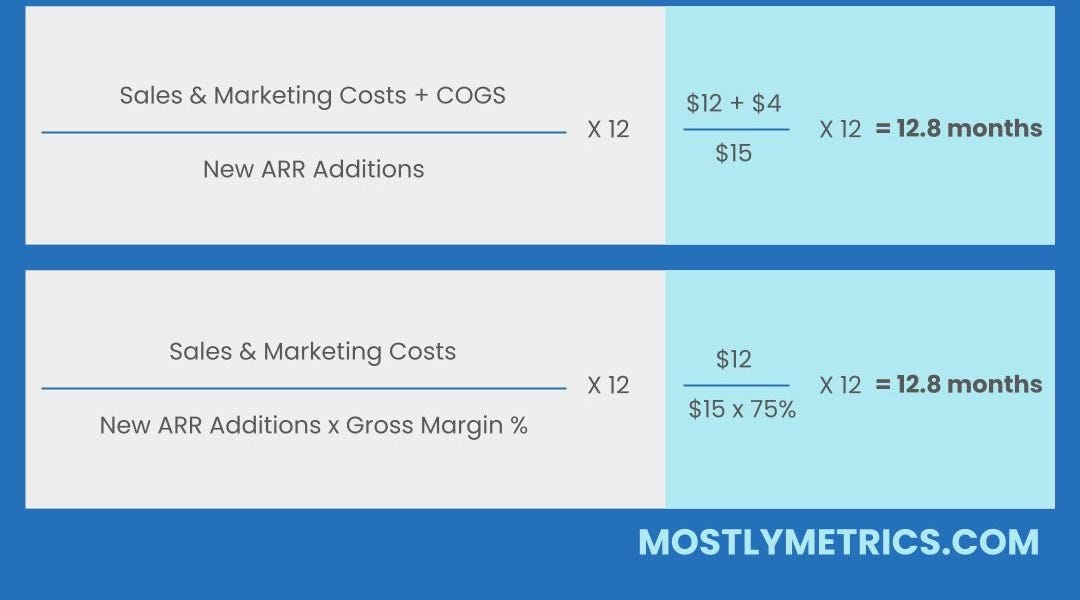How to calculate CAC Payback Period (the right way)

🌈 Abstract
The article provides a deep dive on customer acquisition cost (CAC) and CAC payback period, which are important metrics in the tech industry. It covers the definition, calculation methods, key components, and benchmarking of CAC payback period, as well as potential pitfalls to watch out for.
🙋 Q&A
[01] The Art - What it is
1. What is customer acquisition cost (CAC) and CAC payback period?
- CAC is the amount spent on sales and marketing to acquire a new customer.
- CAC payback period is the number of months it takes to recoup the CAC through the revenue generated from the new customer, taking into account the ongoing costs (COGS) to serve that customer.
- CAC payback period is an important metric as it indicates the efficiency of a company's go-to-market strategy.
2. Why is CAC payback period important?
- CAC payback period shows how efficient a company's go-to-market machine is.
- Investors care about it because a company cannot keep spending more to acquire customers than the revenue generated from those customers.
- It indicates whether a company has built a sustainable business model with healthy unit economics.
[02] The Science - Two preferred ways to calculate it
1. What are the two common ways to calculate CAC payback period? The two common methods are:
- Using COGS as a dollar figure
- Using COGS as a percentage of revenue
2. What is the key consideration when using either method? Regardless of the method used, the CAC needs to be "gross margin adjusted" to account for the ongoing costs (COGS) of serving the customer.
[03] The Components - The data inputs
1. What are the key data inputs required to calculate CAC payback period? The key inputs are:
- Sales and marketing expenses (S&M), which should be lagged based on the average sales cycle
- Cost of goods sold (COGS), which includes hosting, customer support, and customer success costs
- New revenue additions, preferably measured in annual recurring revenue (ARR)
2. How should these inputs be measured?
- S&M should be lagged by 0-2 quarters depending on the sales cycle length
- COGS should not be lagged, and should be taken from the same period as the new revenue additions
- New revenue additions are best measured on a trailing 12-month basis to smooth for seasonality
[04] A template for you to use in your own calcs
1. What template is provided in the article for calculating CAC payback period? The article provides a template that incorporates the key data inputs mentioned in the previous section.
[05] What does "good" look like? - Benchmarking real companies
1. What are the typical CAC payback period benchmarks for private software companies?
- The median CAC payback period for private software companies is under 18 months, with smaller companies needing faster payback (e.g. under 12 months).
- Larger, public companies tend to have longer payback periods (around 24 months) due to their focus on enterprise sales and better access to capital.
2. How do the CAC payback periods of some public software companies compare?
- The article provides examples of public companies growing 30-50% annually, with Klaviyo having the fastest payback at under 1 year, followed by Crowdstrike and Samsara at under 1.5 years. The median for this cohort is around 24 months.
[06] Can CAC Payback be too low?
1. Can CAC payback period be too low, and what does that indicate? Yes, a CAC payback period that is too low (e.g. under 6 months for small private companies, or under 10 months for public companies) may indicate that the company is underinvesting in its go-to-market engine and leaving money on the table.
2. How can net dollar retention rate help triangulate an appropriate CAC payback period? The article suggests that companies with very high net dollar retention (over 140%) and very fast CAC payback (under 18 months) should consider increasing their customer acquisition spending, as the long-term value of those customers will likely justify the upfront investment.
[07] Anything else to watch out for?
1. What are some potential pitfalls to be aware of when calculating CAC payback period?
- The reported CAC payback period is likely understated, as overhead costs and share-based compensation are often not fully accounted for in the S&M and COGS figures.
- For product-led growth (PLG) companies, R&D costs that support the self-service customer acquisition model are often not included in the CAC payback calculation, which can make the metric appear better than it truly is.
- When using public company data, the use of GAAP revenue instead of ARR additions can result in a 10-20% overstatement of the CAC payback period compared to private companies.